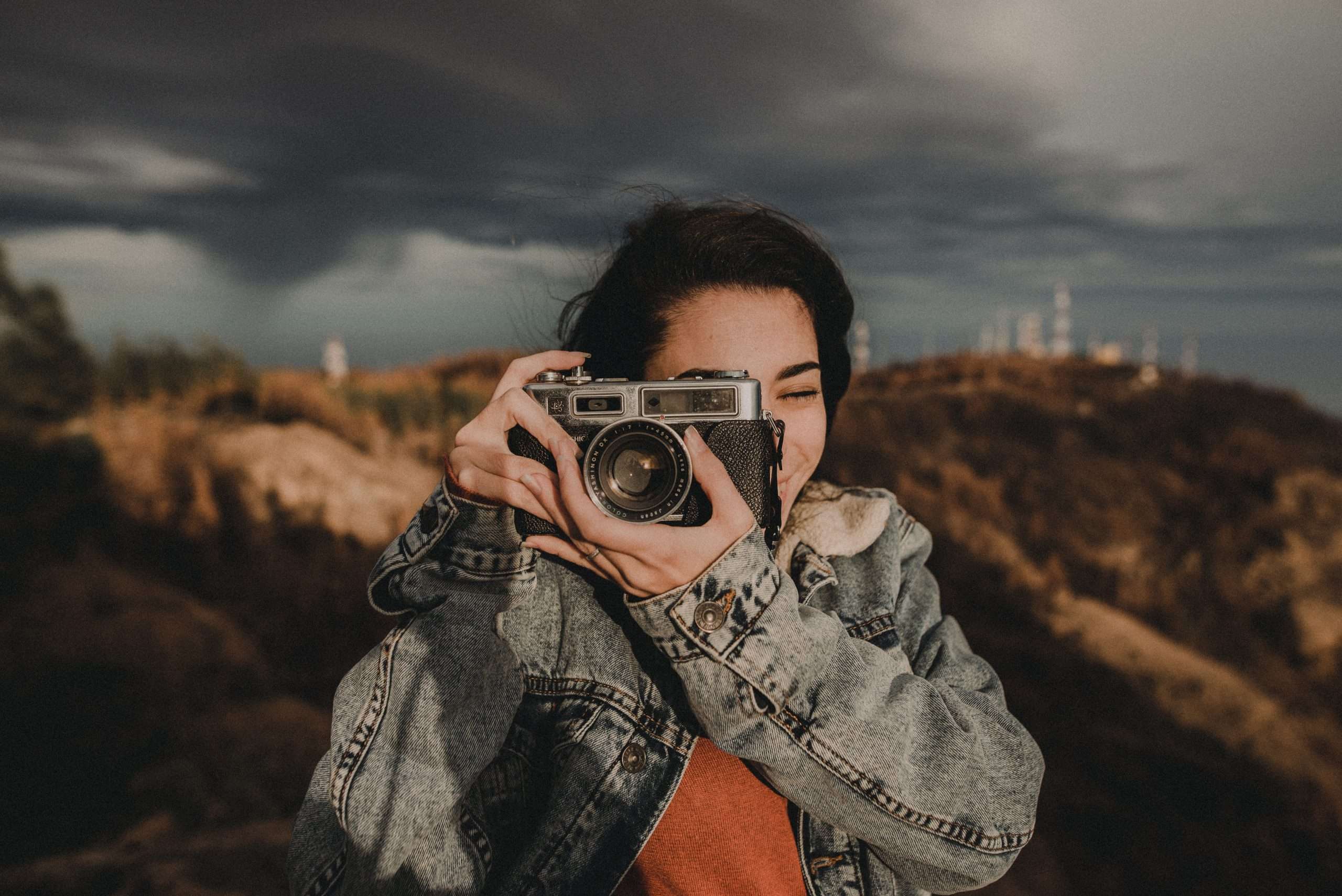When starting out in photography, understanding the basics of cameras is essential in order to choose the right one that suits your needs.
Choosing the right camera can be a daunting task, especially with the wide range of options available. The first step is to determine your budget and decide what you want to use the camera for. There are various types of cameras, including compact cameras, bridge cameras, DSLR cameras, mirrorless cameras, and high-end cameras. Each type has its own advantages and features to consider. It’s important to pay attention to factors such as the sensor size, pixel count, ability to shoot in RAW, manual mode capabilities, image stabilization, ISO range, and lens options. Doing research and reading consumer and expert reviews can also help in making an informed decision. Lastly, consider the ergonomics of the camera and don’t forget about insurance. Ultimately, the right camera for you is one that matches your budget, purpose, and desired features.
Key Takeaways:
- Understand your budget and intended use of the camera.
- Familiarize yourself with the different types of cameras and their unique features.
- Pay attention to factors such as sensor size, pixel count, and shooting capabilities.
- Do thorough research and read consumer and expert reviews.
- Consider the ergonomics and the need for camera insurance.
Types of Cameras and Their Features
There are various types of cameras on the market, each with its own set of functions and features to consider. Understanding these different types can help you make an informed decision about which camera is right for you.
Compact Cameras
Compact cameras, also known as point-and-shoot cameras, are small and easy to carry around. They are designed for simple operation and are great for everyday photography. These cameras often have built-in lenses and limited manual controls, making them ideal for beginners or casual photographers.
Bridge Cameras
Bridge cameras bridge the gap between compact cameras and DSLR cameras, offering more advanced features while still being easy to use. They have larger zoom ranges, allowing you to capture images from a distance, and typically offer manual control options. This makes them a versatile choice for photographers who want more control without the complexity of a DSLR.
DSLR Cameras
DSLR cameras, or digital single-lens reflex cameras, are popular among professional photographers and photography enthusiasts. They offer exceptional image quality, interchangeable lenses, and advanced control over settings. DSLRs are versatile and can be used for a wide range of photography genres, from landscapes to portraits.
Mirrorless Cameras
Mirrorless cameras are similar to DSLRs in terms of image quality and control, but they do not have a mechanical mirror that reflects light into an optical viewfinder. Instead, they use electronic viewfinders or LCD screens for composition and review. Mirrorless cameras are compact, lightweight, and offer a wide range of lenses, making them a popular choice for travel and street photographers.
High-End Cameras
High-end cameras are designed for professional photographers and those who demand the best image quality and performance. These cameras often have full-frame sensors, which produce superior image quality and perform well in low-light conditions. They also offer advanced features such as high-speed continuous shooting and extensive customization options.
When considering a camera, it’s important to assess your needs, budget, and experience level. Take into account factors such as sensor size, pixel count, shooting capabilities, image stabilization, ISO range, and lens options. Do your research, read consumer and expert reviews, and consider the ergonomics of the camera. Ultimately, the right camera for you is the one that aligns with your budget, purpose, and desired features.
| Type of Camera |
Main Features |
| Compact Cameras |
Small and easy to carry, simple operation, built-in lenses |
| Bridge Cameras |
Advanced features, larger zoom ranges, manual control options |
| DSLR Cameras |
Interchangeable lenses, exceptional image quality, advanced control |
| Mirrorless Cameras |
Compact and lightweight, electronic viewfinders, wide lens selection |
| High-End Cameras |
Superior image quality, high-speed shooting, customization options |
Factors to Consider When Choosing a Camera
To make an informed decision, it’s crucial to consider various factors that can greatly impact your photography experience. The first step is to determine your budget and what you want to use the camera for. With a wide range of options available, it can be overwhelming to choose the right camera. Let’s explore some key factors to help you make the best choice.
One important factor is the type of camera. There are various types available, each with its own advantages. The compact camera is perfect for everyday use and travel, while the bridge camera offers more advanced features and zoom capabilities. DSLR cameras provide exceptional image quality and versatility, while mirrorless cameras are compact and offer fast performance. High-end cameras are designed for professional photographers and offer superior image quality and advanced features.
When selecting a camera, it’s essential to pay attention to technical specifications. Factors such as sensor size, pixel count, and shooting capabilities greatly influence the image quality. The ability to shoot in RAW format and manual mode capabilities give you more control over your photographs. Image stabilization helps reduce blur, especially in low-light conditions. ISO range determines the camera’s sensitivity to light, and lens options allow for flexibility in capturing different types of images.
Table: Comparison of Camera Types and Key Features
| Type of Camera |
Advantages |
Key Features |
| Compact Camera |
Portable, easy to use |
Small sensor, limited zoom range |
| Bridge Camera |
Advanced features, extended zoom |
Larger sensor, manual controls |
| DSLR Camera |
Image quality, versatility |
Larger sensor, interchangeable lenses |
| Mirrorless Camera |
Compact, fast performance |
Electronic viewfinder, interchangeable lenses |
| High-End Camera |
Professional-grade quality, advanced features |
Large sensor, extensive manual controls |
Researching and reading reviews from both consumers and experts can provide valuable insights into the camera’s performance, image quality, and ease of use. It’s important to consider the experiences of others before making a purchase.
Finally, don’t overlook the importance of ergonomics and insurance. A camera that feels comfortable in your hands and has intuitive controls will enhance your photography experience. Additionally, considering camera insurance can provide peace of mind and protect your investment.
In conclusion, selecting the right camera involves considering factors such as the camera type, technical specifications, research and reviews, ergonomics, and insurance. By carefully evaluating these aspects and matching them to your budget, purpose, and desired features, you can make an informed decision that will enhance your photography journey.
Researching and Making an Informed Decision
With so many options available, doing thorough research and reading reviews is key to ensuring you choose the right camera for your needs. The internet is a valuable resource for gathering information about different camera models, features, and performance. Start by visiting reputable photography websites, forums, and online communities where professional photographers and enthusiasts share their experiences and recommendations.
When researching cameras, pay attention to factors such as sensor size, pixel count, and shooting capabilities. A larger sensor size generally results in better image quality, especially in low-light conditions. Higher pixel count allows for more detail in your photos, but keep in mind that it can also lead to larger file sizes and may not necessarily be essential for your needs. Consider the shooting capabilities of the camera, such as burst mode, autofocus speed, and video recording capabilities, if those features are important to you.
Reading consumer and expert reviews can provide valuable insights into the strengths and weaknesses of different camera models. Look for reviews that discuss image quality, ease of use, battery life, and durability. Pay attention to the overall consensus among reviewers to get a clearer understanding of a camera’s performance and reliability.
Comparing Specifications and Features
A useful approach when making a decision is to create a comparison table or spreadsheet. List the cameras you are considering and include important specifications such as sensor size, pixel count, ISO range, and lens options. This visual representation will help you evaluate and compare different models side by side, making it easier to identify the camera that checks all the boxes for your requirements.
| Camera Model |
Sensor Size |
Pixel Count |
ISO Range |
Lens Options |
| Camera A |
APS-C |
24.2MP |
100-25600 |
Interchangeable lenses |
| Camera B |
Full Frame |
20.1MP |
100-51200 |
Fixed lens |
| Camera C |
Micro Four Thirds |
16MP |
200-25600 |
Interchangeable lenses |
Remember, choosing the right camera is a personal decision. Consider your budget, intended use, and desired features when making your final decision. By doing thorough research, comparing specifications, and reading reviews, you can confidently select a camera that will capture your special moments with clarity and precision.
Considering Ergonomics and Insurance
While it’s important to consider technical specifications, don’t forget to pay attention to the ergonomics of the camera and the need for insurance. The ergonomics of a camera refer to its design, size, weight, and user-friendliness. A camera that feels comfortable in your hands and has intuitive controls will greatly enhance your photography experience. Consider factors such as the grip, button placement, and menu layout to ensure that using the camera feels natural and ergonomic.
Additionally, insurance is often overlooked when purchasing a camera, but it’s an essential aspect to consider. Cameras can be expensive investments, and accidents, theft, or damage can occur unexpectedly. Having the appropriate insurance coverage for your camera will provide peace of mind, knowing that you’re protected financially in case of any unfortunate incidents. Be sure to research and compare different insurance options to find the one that best suits your needs and offers comprehensive coverage.
To give you an idea of the importance of ergonomics and insurance, here’s a table summarizing their significance:
| Ergonomics |
Insurance |
| Ensures comfort and ease of use |
Provides financial protection |
| Enhances shooting experience |
Covers accidents, theft, and damage |
| Intuitive controls and user-friendly design |
Offers peace of mind |
Remember, choosing the right camera involves more than just technical specifications. Consider the ergonomics of the camera to ensure that it feels comfortable in your hands and meets your shooting style. Additionally, protect your investment by obtaining the necessary insurance coverage. By taking these aspects into account along with the technical features, you’ll be well-equipped to make an informed decision when choosing the camera that’s perfect for you. Happy shooting!
Conclusion
Choosing the right camera can be a daunting task, but by considering your needs and doing thorough research, you can find a camera that enhances your photography experience. The first step is to determine your budget and what you want to use the camera for. Whether you’re a beginner looking for a camera to capture family moments or a professional photographer seeking high-end features, there’s a camera out there for everyone.
There are various types of cameras available, each with its own advantages and features. Compact cameras are great for everyday use and travel, while bridge cameras offer more zoom capabilities. For those wanting more control and flexibility, DSLR and mirrorless cameras are popular choices. High-end cameras provide top-of-the-line performance and image quality.
When choosing a camera, pay attention to factors such as sensor size, pixel count, shooting capabilities, image stabilization, ISO range, and lens options. These features will greatly impact the quality of your photographs. Additionally, doing research and reading consumer and expert reviews will help you make an informed decision.
Don’t forget to consider the ergonomics of the camera as well. A comfortable grip and intuitive controls can make a significant difference in your shooting experience. Lastly, camera insurance is worth considering to protect your investment and give you peace of mind.
In conclusion, finding the right camera is about finding a balance between your budget, purpose, and desired features. By thoroughly considering these factors and doing your research, you can find a camera that meets your needs and allows you to capture stunning images. Happy shooting!
What Camera Settings Are Important to Consider When Choosing the Right Camera for Your Needs?
Choosing the right camera for your needs requires careful consideration of camera settings explained. Factors like resolution, shutter speed, aperture, and ISO sensitivity must align with your requirements. High-resolution cameras are ideal for professional photographers, while beginners may prioritize user-friendly settings. Examining each setting’s impact on image quality and flexibility helps you make an informed decision.
FAQ
What factors should I consider when choosing a camera?
When choosing a camera, it’s important to consider factors such as the sensor size, pixel count, ability to shoot in RAW, manual mode capabilities, image stabilization, ISO range, and lens options.
How do I make an informed decision when choosing a camera?
To make an informed decision, it’s recommended to do research and read consumer and expert reviews. This will help you gain a better understanding of the camera’s performance and features.
Why is it important to consider the ergonomics of the camera?
Considering the ergonomics of the camera is important because it affects how comfortable and easy it is to handle and use. A camera that feels good in your hands will allow for better control and less fatigue during long shooting sessions.
Should I consider getting insurance for my camera?
Yes, it’s advisable to consider getting insurance for your camera. Accidents can happen, and having insurance will help protect your investment in case of damage, theft, or loss.






